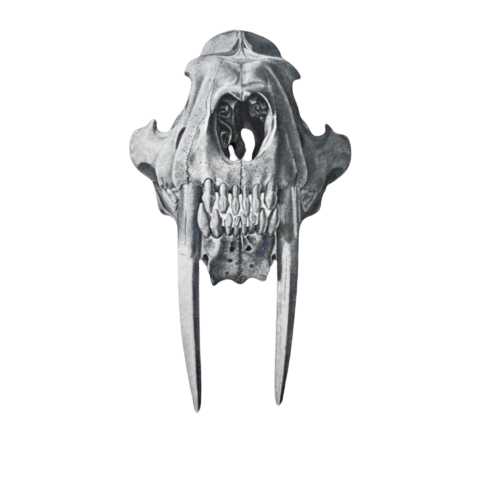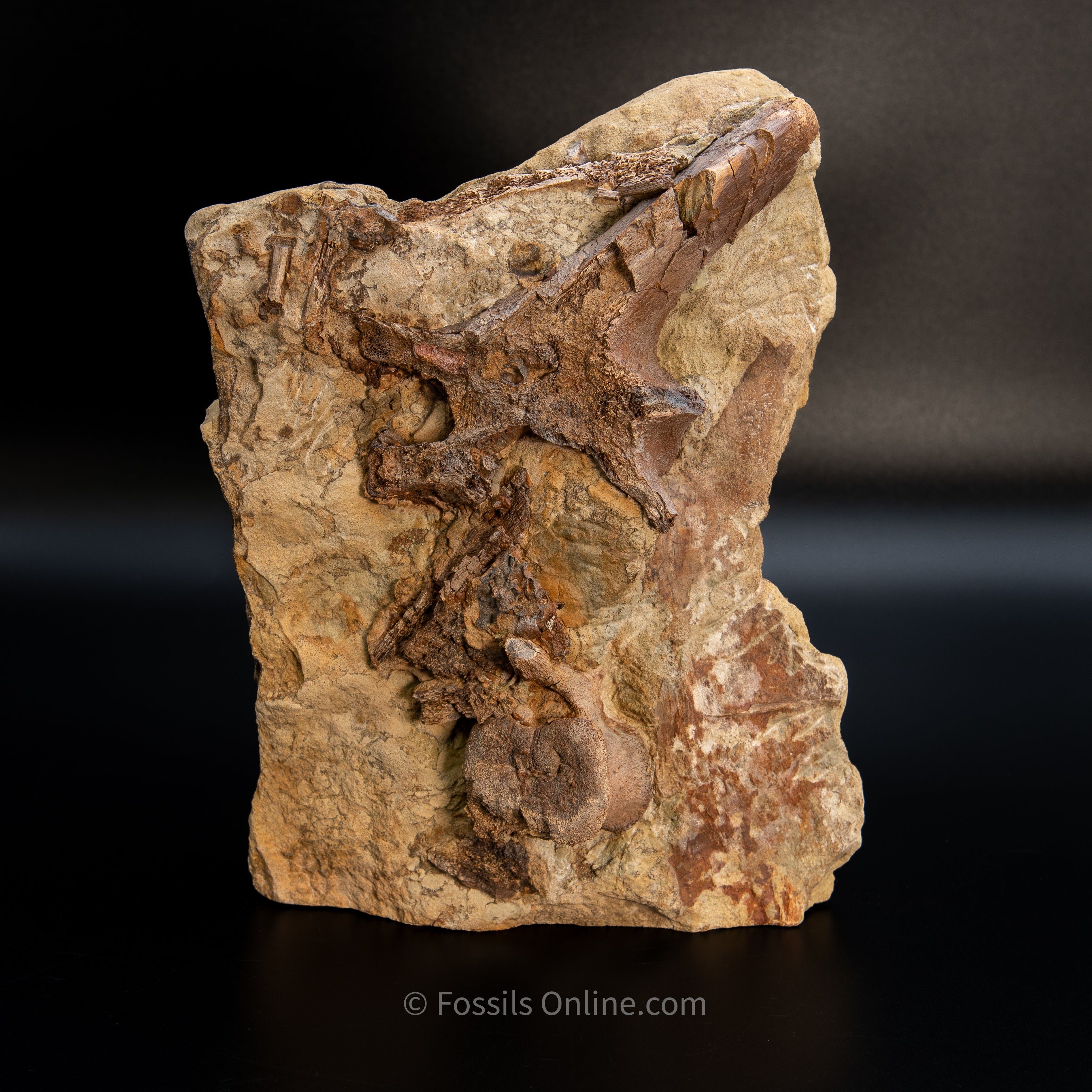
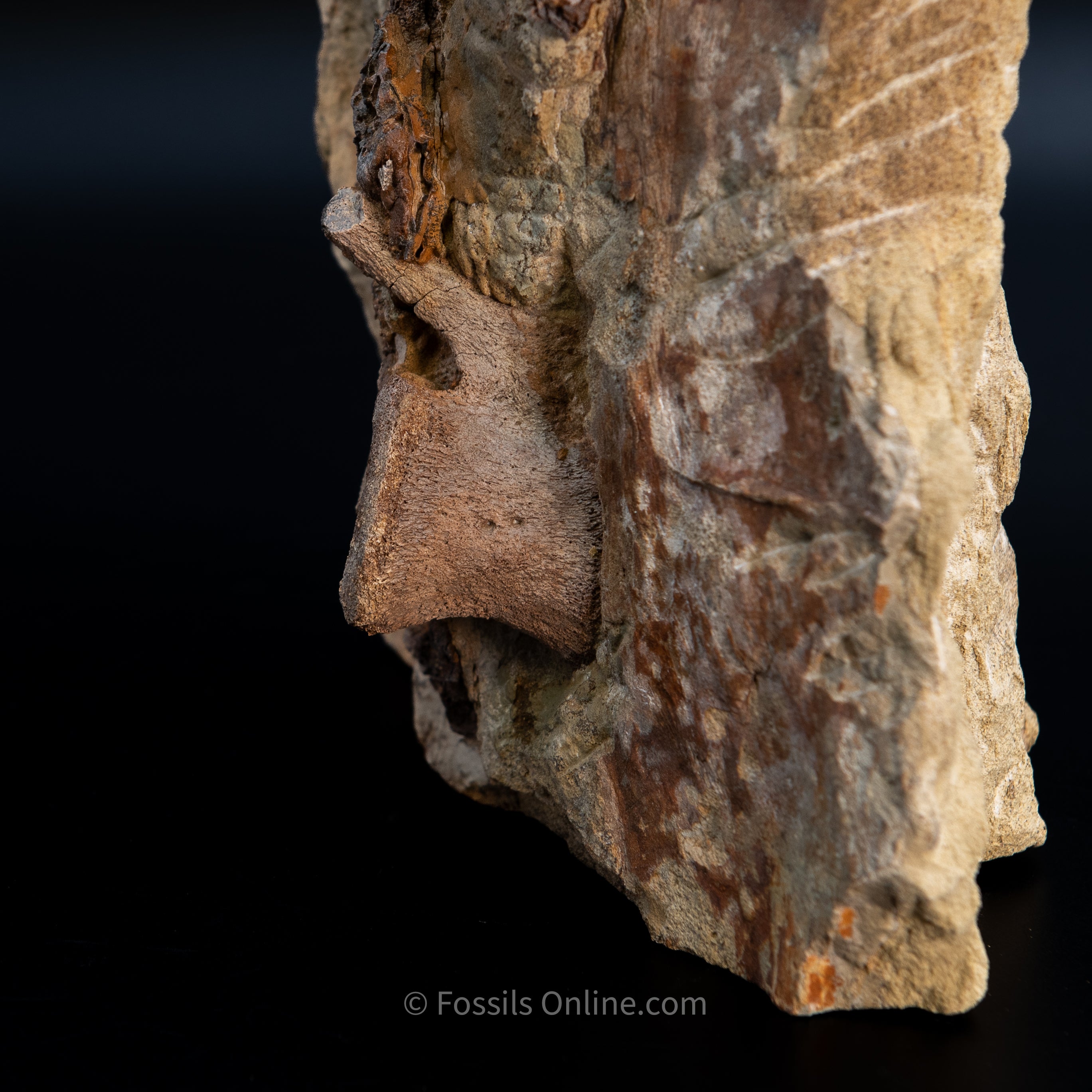
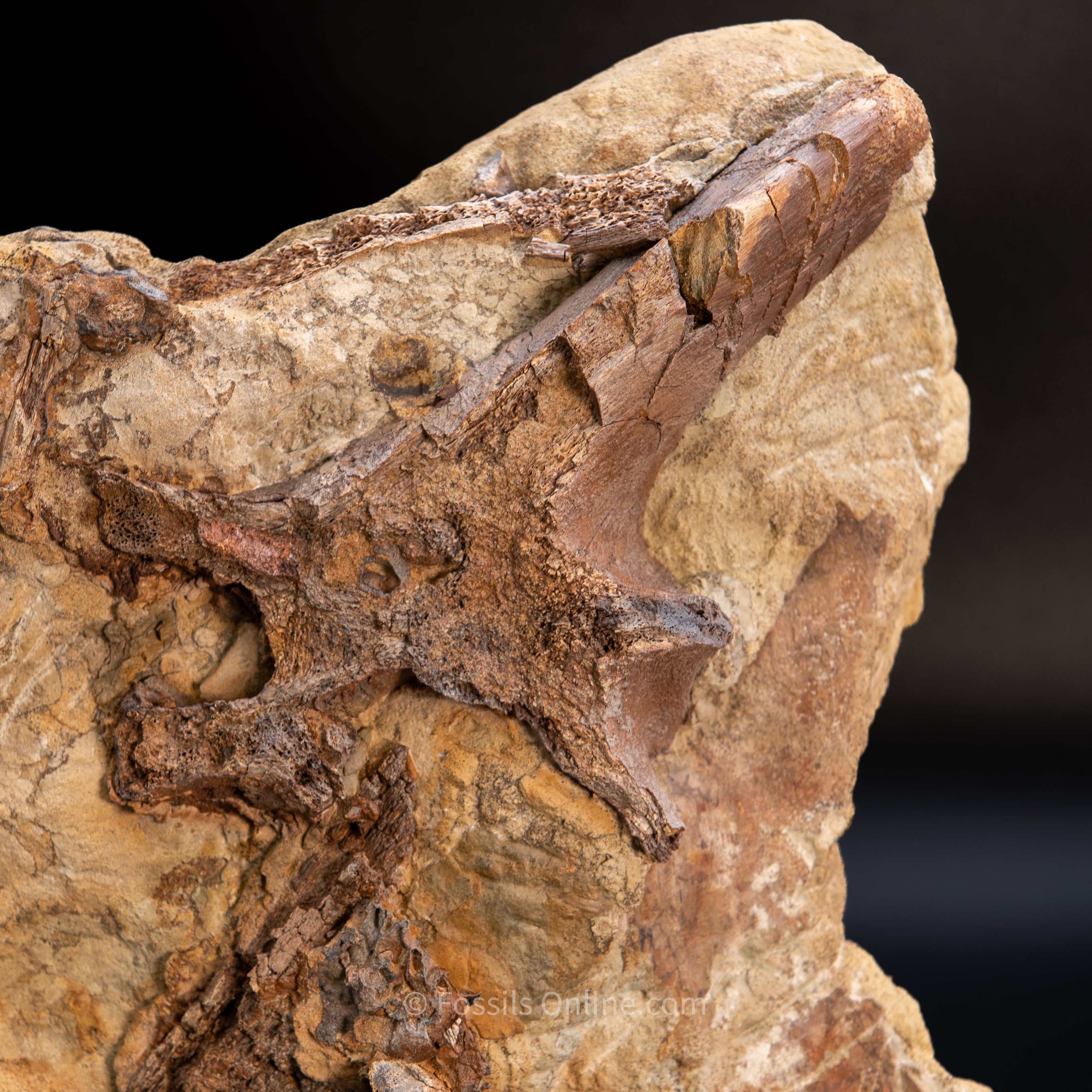
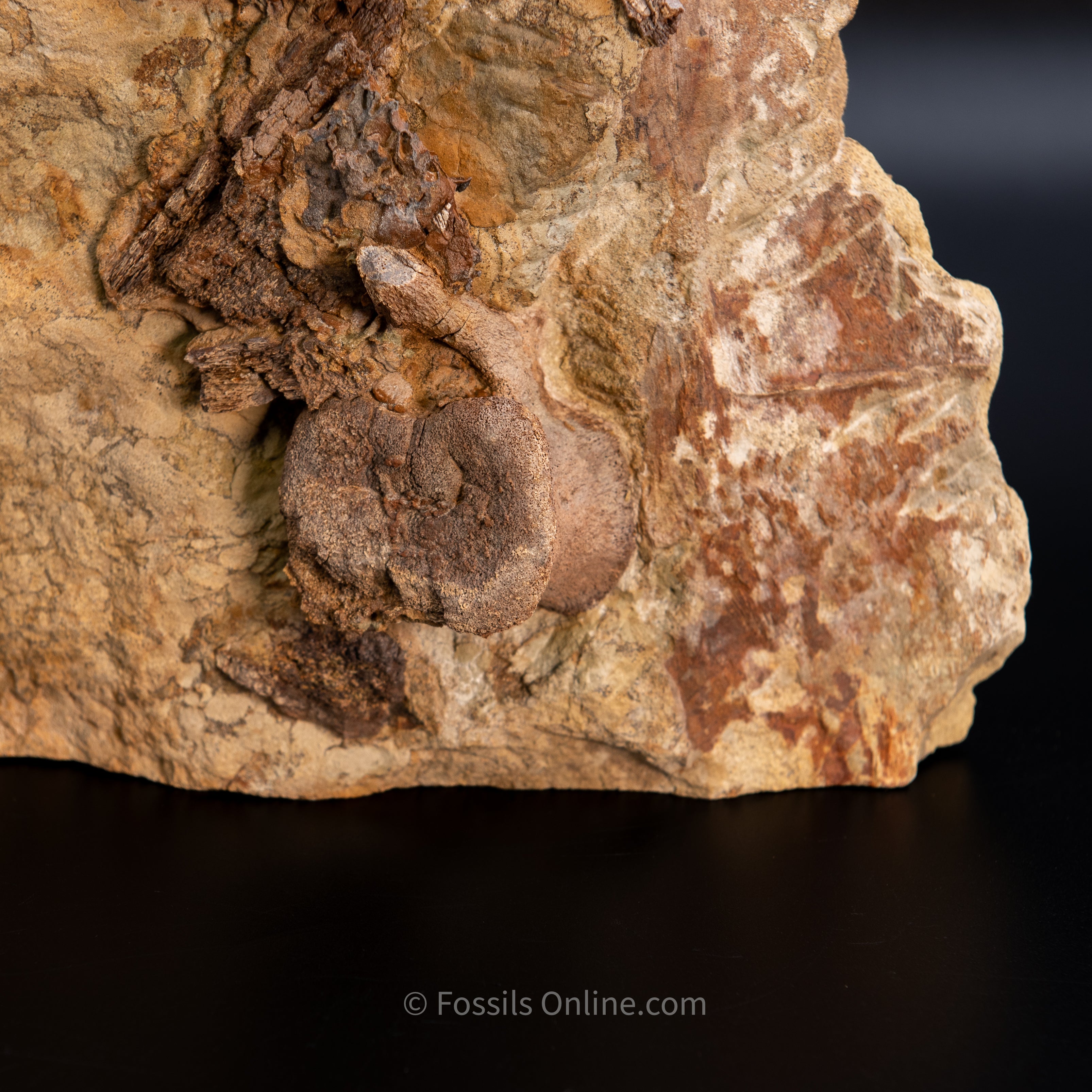
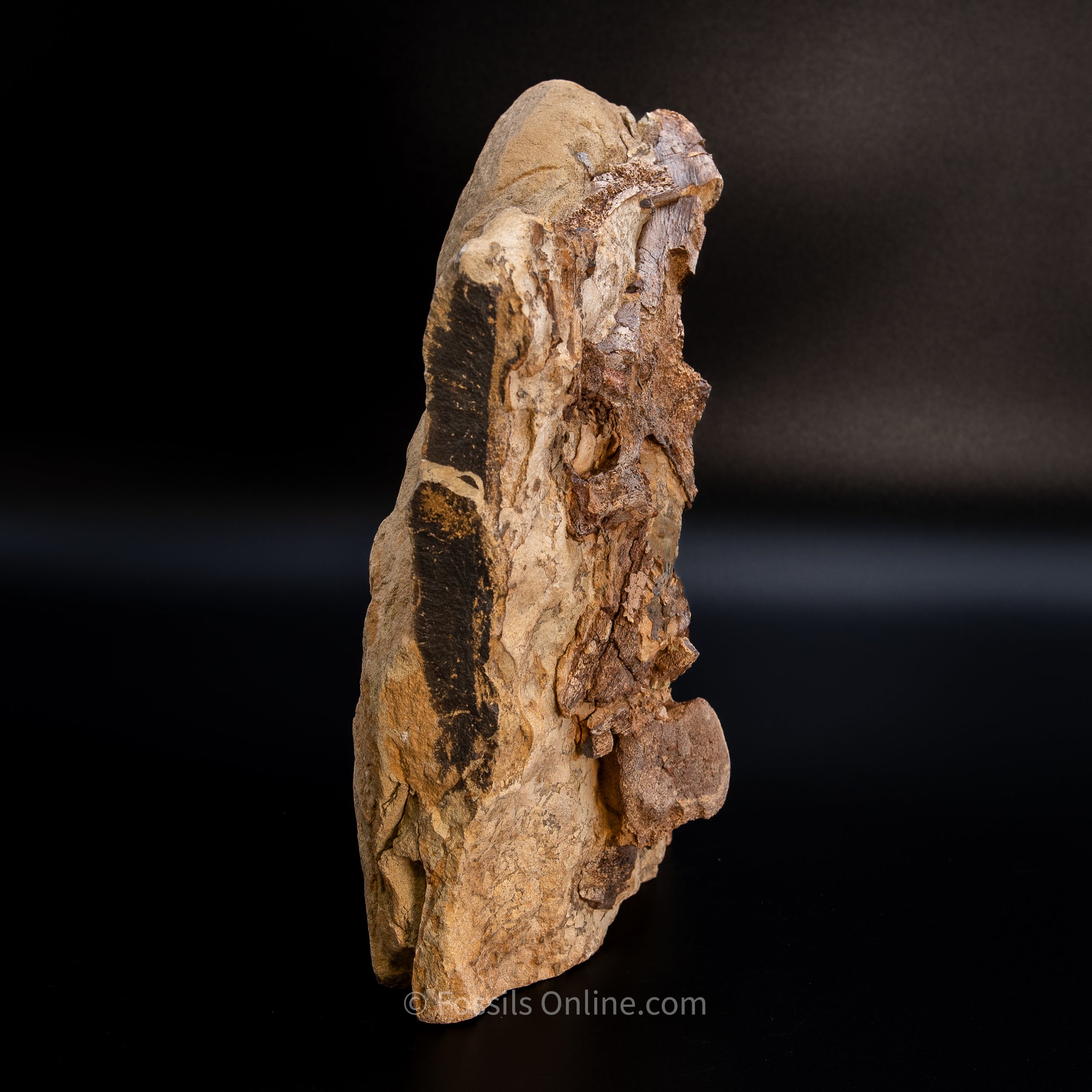
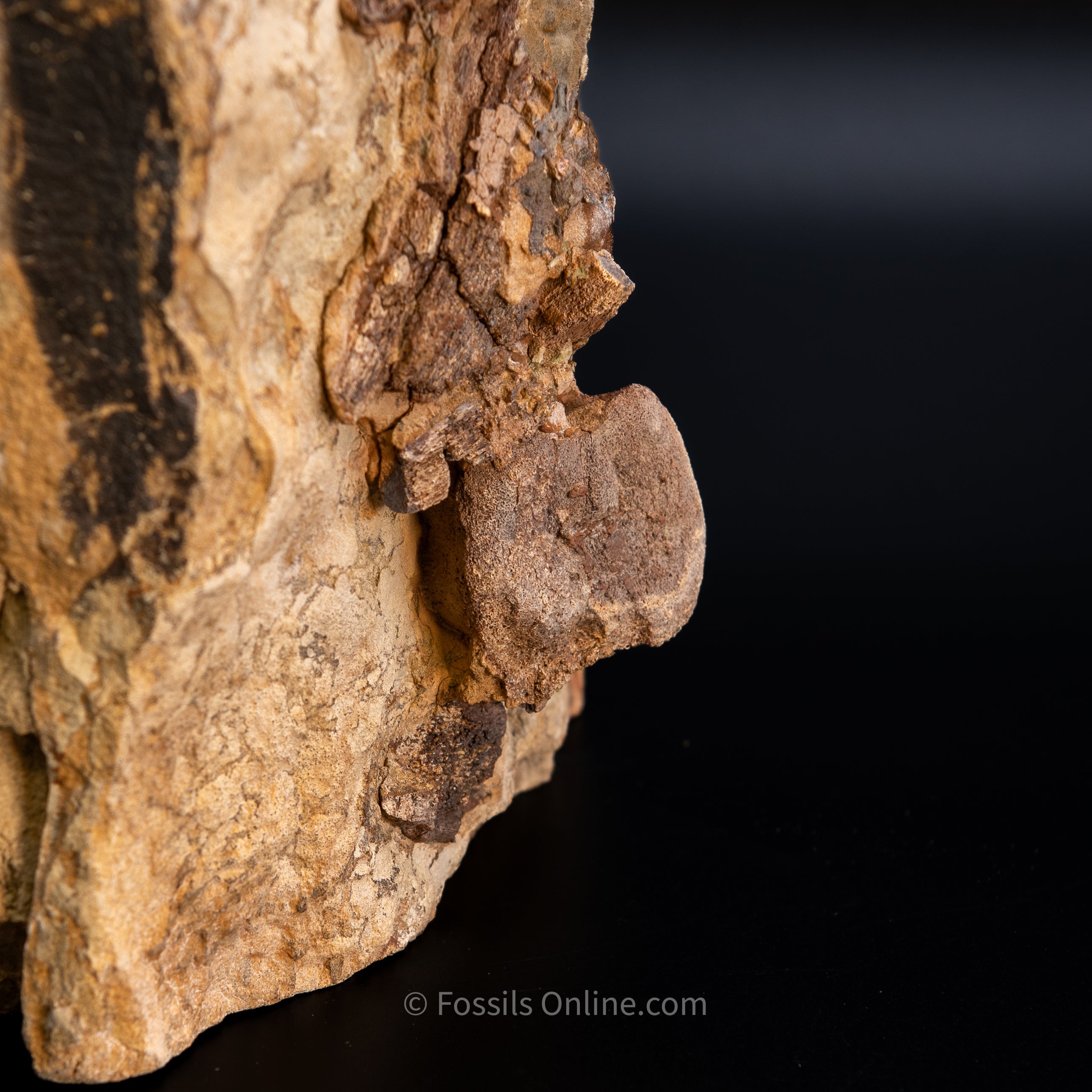
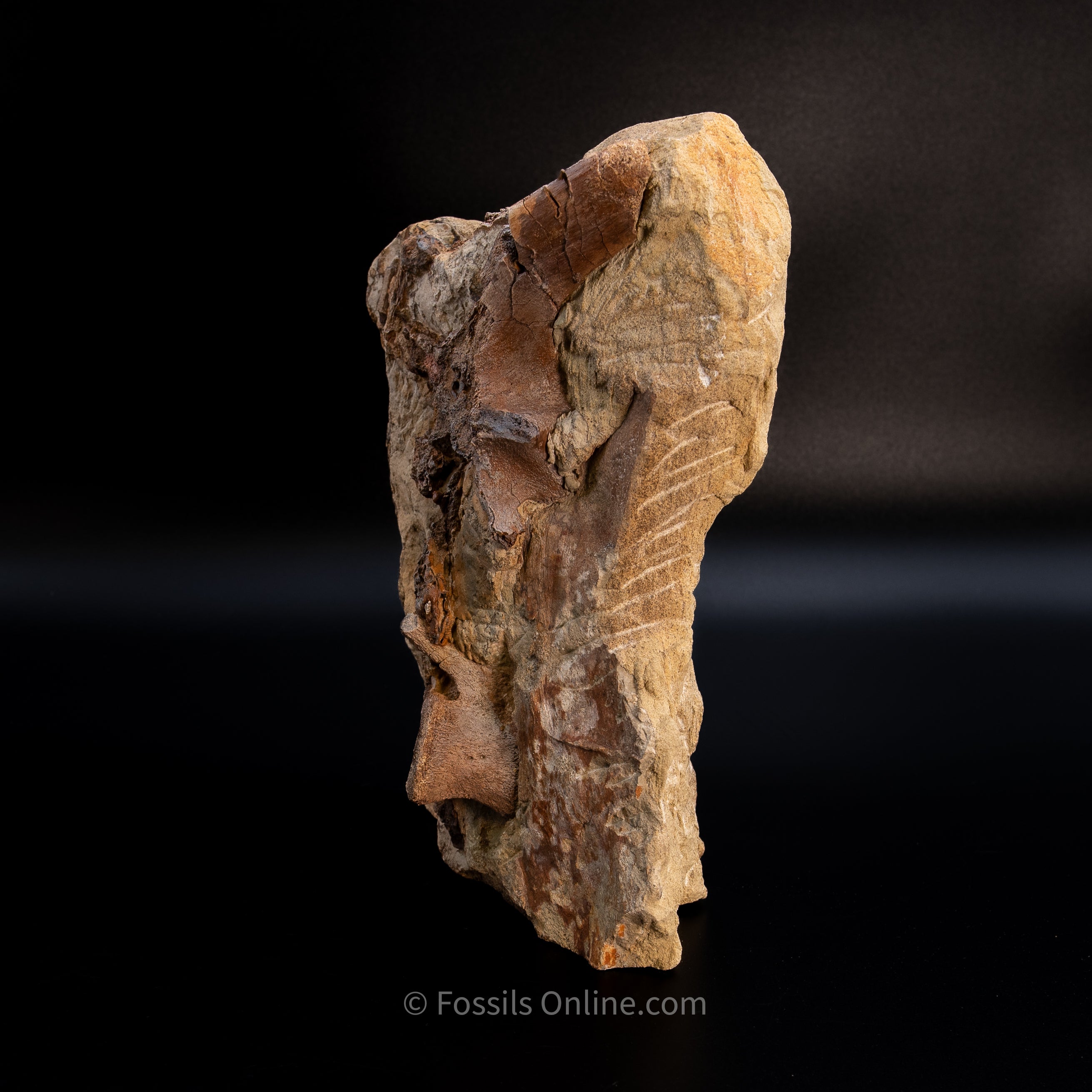
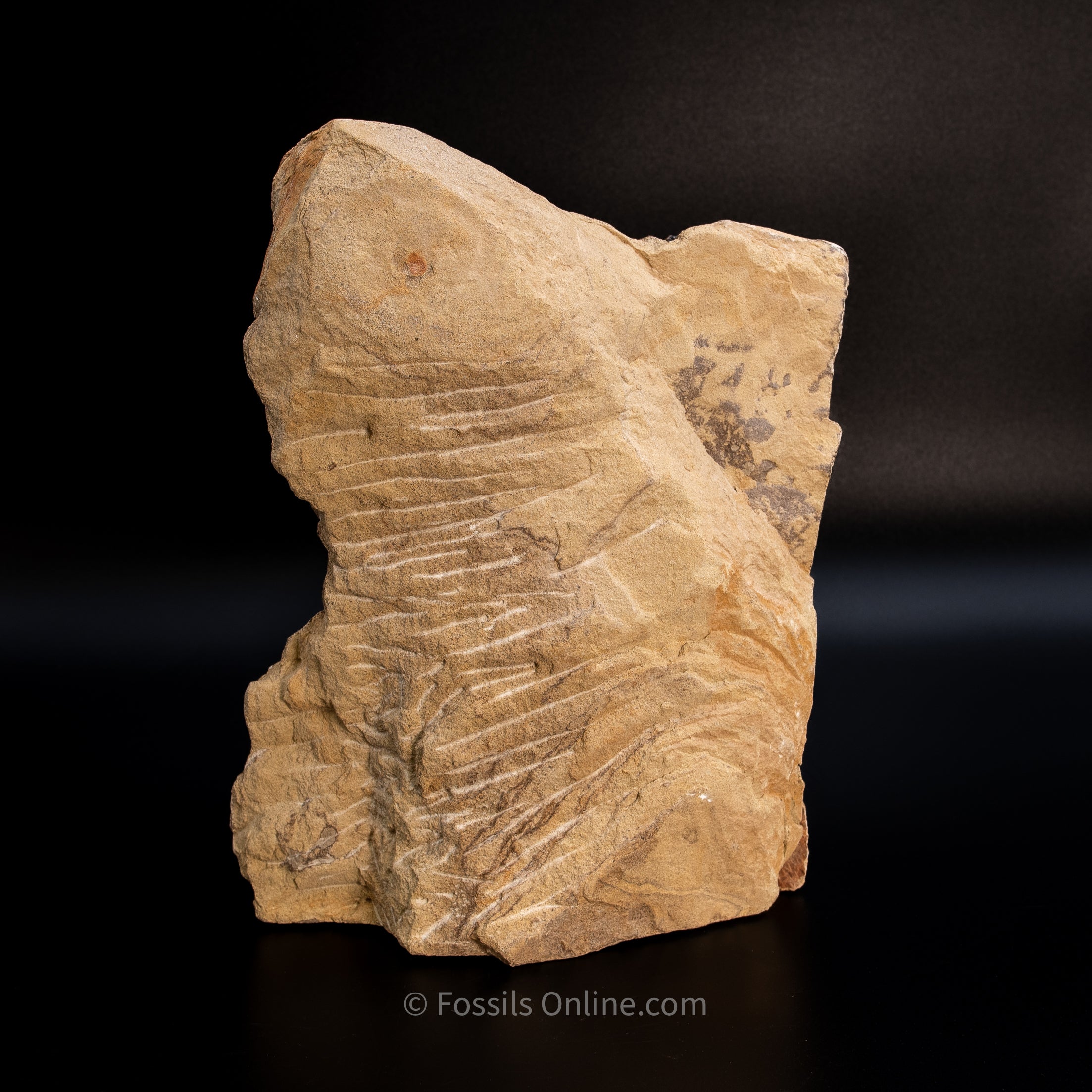
11" Edmontosaurus Vertebrae, Tendons, and Bones in Sandstone Matrix- Wyoming
This 11-inch-tall piece of sandstone holds a fascinating mix of ancient remains—two vertebrae, ossified tendon, and other assorted bones—all still resting exactly where they were found, just as they were preserved in nature. Collected from the Lance Formation in Wyoming, this specimen likely belonged to Edmontosaurus annectens, a duck-billed hadrosaur that lived at the very end of the age of dinosaurs. It’s a beautiful snapshot of prehistoric life, frozen in time for over 66 million years.
The Lance Formation in Wyoming, a geological formation from the Late Cretaceous period, is known for its rich fossil content, including the remains of hadrosaurs, a group of duck-billed dinosaurs. Among the most intriguing discoveries from this region are the fossilized tendons of these hadrosaurs, which offer unique insights into the anatomy and physiology of these prehistoric creatures.
Characteristics of Fossilized Tendons: Fossilized tendons in hadrosaurs are primarily ossified tendons, which means they have undergone a process of mineralization, turning them into stone. These tendons are typically found along the spine and tail of the dinosaur. In life, these tendons would have provided support and stability to the animal's body, especially important for large, bipedal or quadrupedal creatures like hadrosaurs.
Species
Edmontosaurus annectens.
AGE
late Cretaceous
LOCATION
Wyoming
FORMATION
Lance
Size
11"x9"
Choose options








